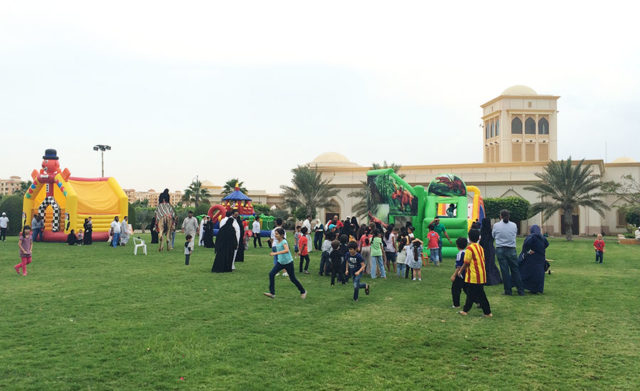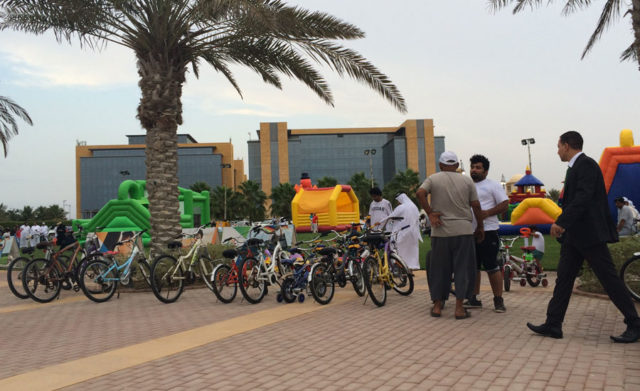6 Months in King Abdullah Economic City
November 20, 2014 — Blog
New cities are not a new phenomenon. Pre-classical Asian cities that secured trade routes, colonial cities of the Americas, Garden Cities of the fast industrializing early 20th century, newly fledged capital cities built on dreams of modernity such as Brasilia – these are all historic examples. However, new cities today are facing some of the fiercest competition. The expansion of the global market economy, the flattening of distances via technology and the speed of transportation have erased political borders, forcing cities across equatorial lines and continents to vie for the same investors, employers, employees, and tourists. This begs the question: how will King Abdullah Economic City (KAEC) distinguish itself among the myriad new cities being built in the 21st century?

How will King Abdullah Economic City (KAEC) distinguish itself among the myriad new cities being built in the 21st century?
I was excited by the prospect of being an Impact KAEC Fellow because it offers the unique opportunity to live and work in KAEC at a time when the city is boldly moving away from traditional planning, opening up to foreign investment, and promoting female employment and tourism. I have a long-standing interest in the creation of vibrant places from tabula rasa conditions. The nature of making space has implications not only for the people who inhabit the buildings, it also shapes the civic life around the architecture. Having been selected as one of three Impact KAEC Fellows, I am eager to explore how we as planners and architects can carve out new, more sustainable modes of living by using strategic architecture to harness the social and entrepreneurial potential of KAEC.
The average new city skyline is a graph of the surging global economy, pixelated with buildings by internationally renowned architects; rigid color blocks demarcate distinct swaths of program in the accompanying plans. But architecture should be a catalyst: it is the space where people meet, where they perform, and where ideas are cultivated. KAEC can distinguish itself from other new cities by ensuring that design plays an affirming role in cross-fertilization. The virtuous city is not satisfied with practical answers and the promise of a beautiful design; it demands architecture that operates in the space between the universal and the individual, negotiating complex and contradictory inputs.
Bilbao is frequently presented as the 20th century paradigm of design that affects change, the gallant Guggenheim art museum designed by Frank Gehry that spurred an entire urban redevelopment in Spain. The 21st century has named the New York City High Line its design hero, side-stepping the symbolism of “starchitecture” with a kind of measured pragmatism. The success of the High Line stems not just from the clever appropriation of a dilapidated site, but from the dramatic juxtaposition of a floating linear park cutting through the grid of Manhattan, where urban residences and commerce abut public recreation, creating a dynamic spine of unexpected adjacencies. The impetus for design should always strive for these anomalies where there are surprising synergies produced through the context of difference.
Other examples abound. In Nevada, the CEO of e-commerce site Zappos, moves his company’s headquarters from a remote corporate office park to downtown Las Vegas in an effort to revitalize the community and restore the urban fabric. In Medellin, Columbia, a mayor strategically commissions a series of exquisitely designed public libraries and parks in the most remote, impoverished, and crime-ridden parts of the city to invigorate bleak communities with inclusive visionary spaces. In Norway, a tourist route is punctuated with avant-garde structures through the unadulterated landscape to draw wide spectrum of visitors and locals. In each case, architecture presents an opportunity for strategic overlaps, interstitial places, unexpected encounters and layered programs that outshine even the underpinnings of the design itself. Its multivariate spaces can cut through the strata of various economic, demographic, social and cultural groupings to foster community.
This is the thing about architecture: people think it is static. It is the very opposite. A building will change in its users’ perceptions, its uses and its relevance within a larger, equally mutable landscape. This is how we can come to find value even in architecture that is still in its nascent stages.
The kind of character King Abdullah Economic City takes on will depend not just on what combination of eye-catching design is instituted, but on how neighborhoods are linked and given their center of gravity. In the six months ahead in KAEC, I plan to engage the nuances of the city plan and consider how it can be tooled to respond to the human scale and promote street life, to become a dynamic and diverse place to work and live. I’m confident that the cross-fertilization of KAEC’s Education, Tourism, Industrial, Business, and Landscape components can create new synergies.
